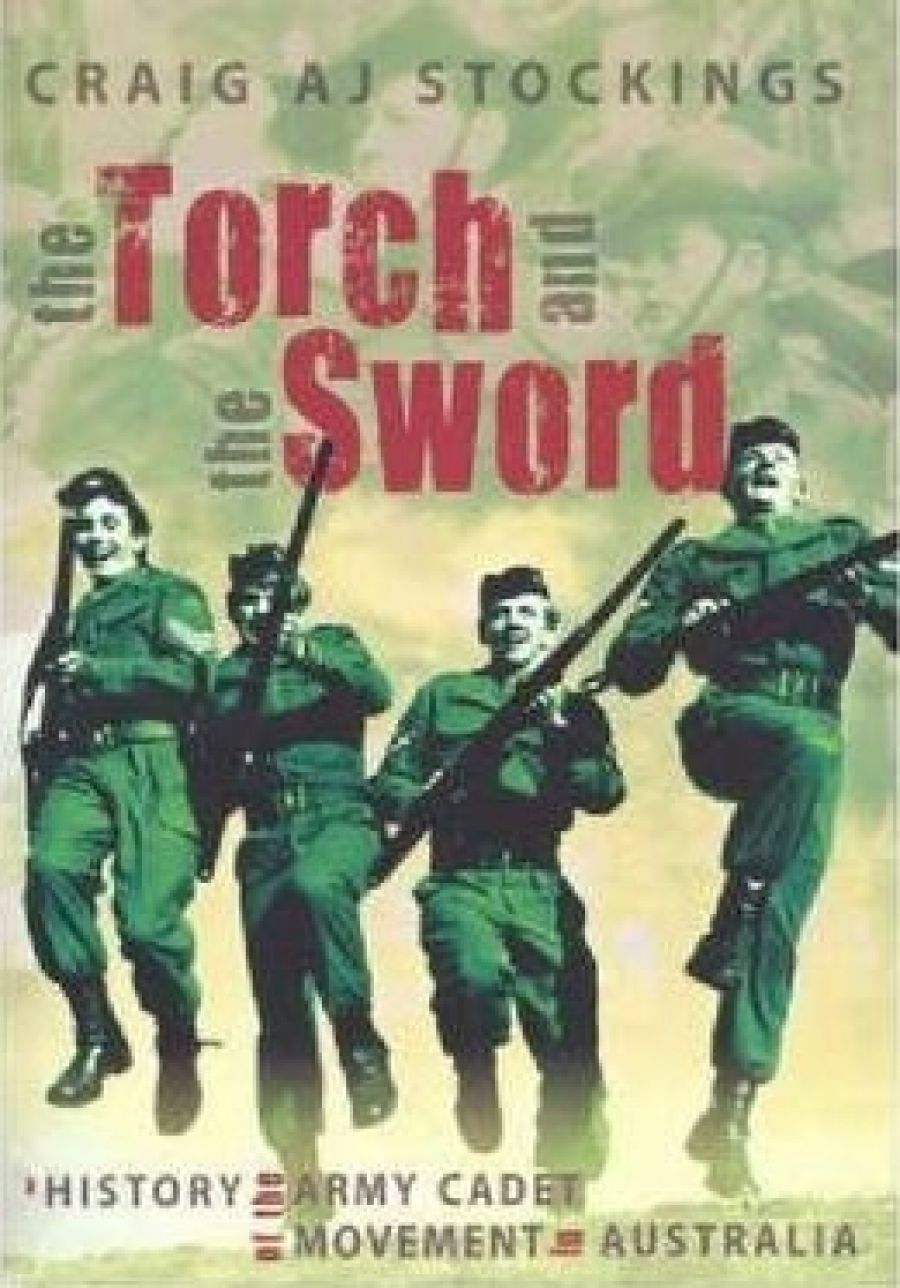
- Free Article: No
- Contents Category: Military History
- Review Article: Yes
- Online Only: No
- Custom Highlight Text:
The Torch and the Sword began life as Craig Stockings’s PhD thesis, and shows its origins on every page. He presents a hypothesis and refers to it often as he proceeds systematically through a chronological and thematic exposition of his subject.
- Book 1 Title: The Torch and the Sword
- Book 1 Subtitle: A history of the army cadet movement in Australia
- Book 1 Biblio: UNSW Press, $49.95 hb, 311 pp
Stockings’s theory is that the army cadet movement has four ‘pillars’ – military, educational, social and financial – and that it will thrive only if these elements are balanced. A secondary thesis holds that the cadet movement always suffers under Labor and revives when the conservatives are in power. Even poor beleaguered John Curtin is accused of ‘an underlying political intent’ when he cut back support for cadets in 1943, ‘although admittedly under pressure from competing wartime priorities’. Robert Menzies, on the other hand, was ‘able to draw significant political capital from widespread community fear during the cold war’.
The prose is a curious mixture of the formal and the emotive, with words like ‘poignant’ used to describe the impact of financial conditions on cadet activities. Stockings makes no secret of his sympathy for the cadet movement. One is inclined to demur occasionally, such as when he describes the 128 hours of confinement meted out to a defaulting cadet in 1913 as a ‘paltry’ punishment; and his description of the 2001 Meecham Report’s intention to ‘introduce cadets to military skills rather than developing combat proficiency’ might involve a subtle distinction difficult for many to appreciate. The causal link that Stockings proposes between participation in cadets and service in the army is not clearly established by the statistics he quotes. Might it not be that those who join the cadets are likely to join the forces anyway? Though the factual research appears extremely thorough, and the structure of the book is clear and logical, as a writer Stockings would make an excellent soldier.


Comments powered by CComment